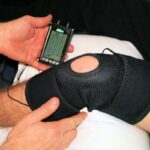If you lead an active lifestyle, Tampa, FL is a wonderful place to call home. Twelve months of sunshine and warm temperatures allow for year-round participation in passive pursuits, such as cycling, tennis, and golf, or more rugged pastimes like basketball and mixed martial arts. In addition, there are numerous gyms to keep you in shape. Regardless of the intensity of your workouts, however, injury is always a risk. You should be aware of the benefits of sports injury rehab.
Depending on the type and severity of your injury, surgery is not always necessary. In fact, rather than the first, it should be the last resort. Often, your body can heal itself by following a rehab program after consulting with a sports medicine physician. Nor is sports medicine limited to athletes. It also benefits patients who have suffered injury or illness through normal activities. No matter how your injury occurred, there are several benefits to rehabilitating through sports medicine.
10 Benefits of Considering Non-Surgical Sports Injury Rehab at One of B3 Medical’s Six Tampa, FL Clinics
1. Rehabilitation Is More Than Healing
While it may sound like stating the obvious, patients often don’t understand the difference between healing and rehab. For instance, a broken leg may heal in time, but without rehabilitation, the patient might never walk with the same range of motion again. If the patient hopes to return to their former physical status or perhaps exceed it, rehab is necessary.
Rehab involves working the damaged portion of the body through stretches and exercises, as well as other treatments, so that it regains strength, flexibility, and range of motion. With a properly designed recovery program, including physical therapy, dietary supervision, and counseling, patients can hope to be their former selves or even more.
2. Preventive Care Reduces the Risk of Future Injury
While recovering from an injury is the main focus of sports medicine, preventive care is equally paramount. Following a program that maintains and even improves your health can limit the potential for future injury. In consultation with you, a physical therapist can design a wellness program through an understanding of your daily routine and the activities that put you at risk. It’s a comprehensive approach. As well as prescribed exercise, it can include sports psychology, dietary, and nutritional advice.
3. The Support of a Personal Trainer
Perhaps the most difficult aspect of a fitness program is working alone. Left to one’s own devices, there is an unavoidable absence of accountability. When rehabbing or training without supervision, it’s too easy to call it a day or take one off. It’s also tempting to cut corners in other ways. Whatever your personality or work ethic, however, a personal trainer can help you adhere to your fitness/rehab routine and diet, thereby drawing the maximum benefit to your body.
4. Improved Overall Health and Fitness
With medical, nutritional, and fitness experts in your corner, your rehab or workout can’t help but produce better results. As a second set of eyes, your personal trainer can correct the unnoticed poor technique that so often leads to injury. Your physical therapist can expand on that progress by charting your diet and sleep habits, helping you improve your mental approach, adjust, and set achievable goals.
5. Greater Flexibility and Range of Motion
Flexibility and range of motion are critical to maintaining peak fitness and health. The stress of physical activity can lead to stiffness in pain in the joints. Regular stretching, not only before and after vigorous activity, but on a daily basis, improves your flexibility, reduces the chance of injury, and strengthens joints so that they are less susceptible to stiffness and pain. A personal trainer or physical therapist guiding your program can prescribe the optimal routine for your needs.
6. Reduced Tension After Workouts
Those who play competitive sports, even recreationally, understand the struggle to relax following heightened activity. That inability to de-stress can affect your sleep. Insufficient rest not only exposes one to injury, but it also weakens the immune system, rendering the body more vulnerable to viruses and other illnesses. Learning to cool down after a workout or hectic day is essential to promoting relaxation and better sleep habits. A physical therapist can teach you how to achieve post-workout relaxation.
7. Non-Addictive Methods of Pain Relief
Whether your sport of choice is as physically grinding as football, ice hockey, or mixed martial arts, or your job is labor-intensive, constantly exerting yourself places undue strain on the body, resulting in chronic muscle and joint pain. Professional athletes often turn to addictive painkillers, such as opioids, as do some people in the workplace. Others choose alternate forms of ‘medication’. Physical therapy is a non-addictive alternative to dangerous narcotics.
Treatments such as epidural, trigger point, and facet joint injections introduce non-opioid anesthetics locally to relieve pain without leading to dependency. Spinal cord stimulation and radiofrequency ablation (RFA) help relieve pain without using medication.
8. Less Invasive Alternative to Surgery
The need for surgery can totally disrupt one’s life. Not only is it painfully invasive, but the recovery process is long and arduous. In the interim, the patient is often unable to work, interact with family and friends, or even leave home without tremendous difficulty or assistance. Finally, there is the mental stress of the exorbitant expense and its negative effect on your health insurance premium.
Opting to rehab your injury rather than undergo surgery not only significantly reduces the cost of treatment, it shortens the recovery process acutely. Avoiding surgery is not always possible; however, the list of injuries, sporting or otherwise, for which there are viable and preferable alternatives is extensive. A sports medicine specialist can determine if there are other avenues to recovery for you.
9. Improved Mental Health
Psychiatric studies have found that regular exercise improves mental health. Regimented physical activity reduces anxiety, depression, and negative mood swings while raising self-esteem and increasing cognitive function. Regular exercise also increases stamina, in turn reducing fatigue and promoting mental acuity. In other words, a well-constructed rehabilitation program implemented after injury, or simply to maintain one’s fitness, not only contributes to physical wellness, it leaves a person on their toes and ready to engage the world.
10. Improved Emotional Health
When we talk about mental health, we’re not just discussing awareness or the ability to think clearly. We’re also addressing how we feel. It’s no secret that feeling empowered lifts one’s spirits. The more we can do, the better we feel about ourselves. Further, when we feel better about ourselves, we’re prepared to take on new challenges. It isn’t difficult to see that taking an active hand in healing our bodies can also heal our minds and hearts.
Whether your injury was suffered on the court, the ice, in the gym, or at the office, returning to 100% is every patient’s objective. We all want to live an active, pain-free lifestyle. It’s what we deserve.
More often than you’d think, non-surgical sports injury rehabilitation is the best option to achieve that goal. When you’re suffering muscle or joint pain anywhere in the body, a comprehensive recovery plan backed by proven sports medicine treatments can restore you to full fitness and health. Come into or call any of B3 Medical’s six Tampa, FL locations for a consultation. We accept most forms of insurance, including Medicare.



























